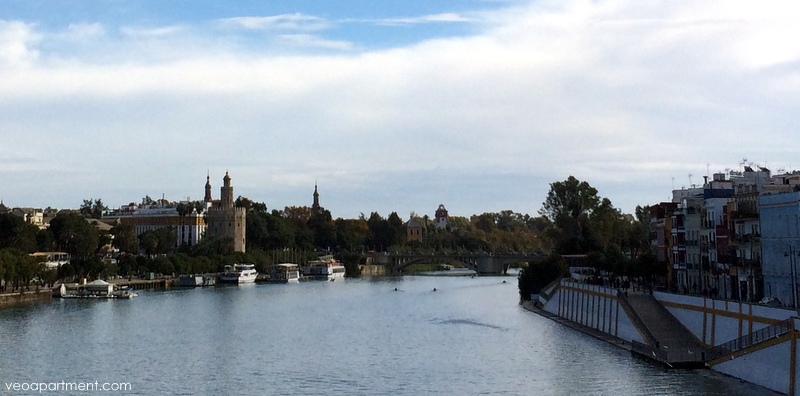The old city of Seville lies nestled in a bend on the east bank of the River Guadalquivir (the name derives from the Arabic, and means big valley or big water) in a wide valley about 80 km from the sea. It’s Spain’s only river port, with a history that goes back to the Phoenicians. The river is the fifth longest in the Iberian peninsula (567 km) and flows from east to west across most of Andalucia. From Córdoba down to the sea the valley is Spain’s most important agricultural region, but it’s also prone to flooding, usually when heavy spring rains coincide with winter snow melt in the mountains where the river rises.
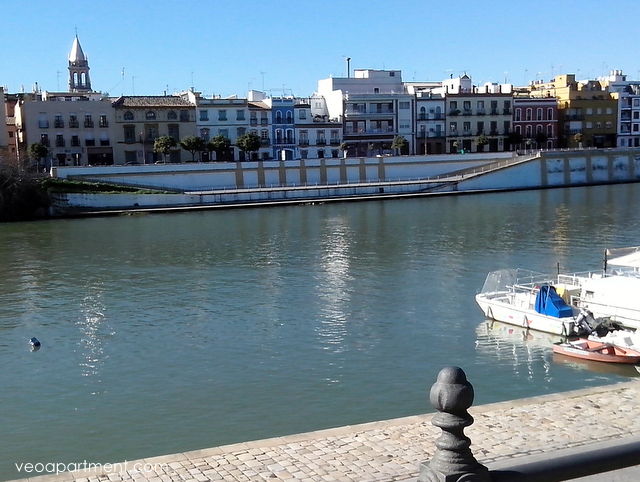
The Moorish Dock in Triana
Nowadays the river and riverside are one of Seville’s major tourist and leisure resources, with everything from river cruises (for the tourists) to sailing, rowing and windsurfing for the locals. On the Seville side it’s now possible to walk beside the river all the way from the Puerto de las Delicias (where cruise ships coming to Seville are berthed) to the Columbus statue in San Jeronimo at the northern edge of the city. Most of this walkway owes its existence to the 1992 world exposition on the Cartuja (celebrating the 500th anniversary of Columbus discovering America), though the final section, the New York Wharf, only opened a couple of years ago.
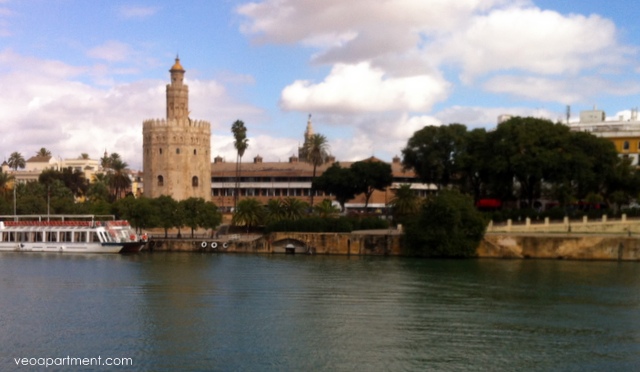
Torre del Oro
Before that, however, use of the riverside was almost entirely commercial, and long stretches were not accessible to the public. The first port of Seville, that of the Phoenicians and then Romans, was actually located on the now vanished secondary branch of the river that ran through the Alameda, alongside Calle Sierpes and the Avenida de la Constitución, as attested by pilings for wharves found near Sierpes and in Plaza San Francisco. The Moors built the distinctive stone dock on Calle Betis on the Triana side, the Torre del Oro, and the first bridge across the river, the “bridge of boats” which was only finally replaced by the Isabella II (Triana) bridge in the mid 19th century. In the 15th and 16th centuries, when Seville had the monopoly of the trade with the New World, the stretch of river on either side of the Torre del Oro was the most important port in Europe, until the river silted up and the trade moved to Cadiz. The 20th century saw major changes, with a totally new port constructed in an artificial “short cut” waterway below Las Delicias, and a new channel for the river’s main flow on the far side of Triana that finally ended the problem of flooding in the city.
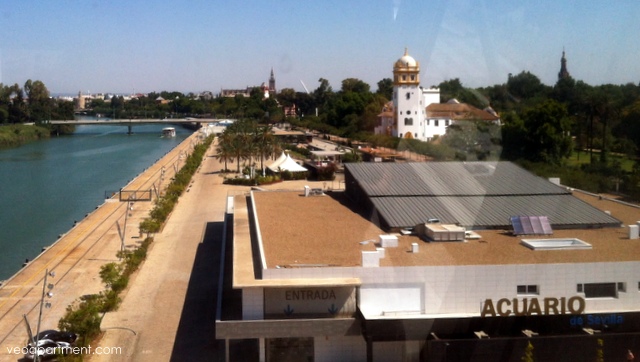
View from the Seville Eye with the Aquarium in the Foreground
Start your exploration of the river by taking a ride on the new Seville Eye, the panoramic ferris wheel that gives a view up and down the river and across the Maria Luisa Park. The bridge between this and the port is a bascule bridge – it opens to allow cruise ships and sailing boats to pass through. Next door pay a visit to the aquarium, another recent addition to Seville’s list of attractions. Plenty of places nearby for refreshments, but look out especially for Seville’s only foodtruck La Cayejera. Then head back towards the city centre. Pay a visit to the naval museum in the Torre del Oro, then go on to the Isabella II bridge. See if you can spot our “Betis Blue” apartments across the river. On the Seville side you can stop for a drink or a snack in the Mercado Lonja del Barranco, a modern food court in the 19th century cast iron fish market building. Alternatively, cross the bridge to the main Triana market and the ruins of San Jorge Castle (former headquarters of the Spanish Inquisition).
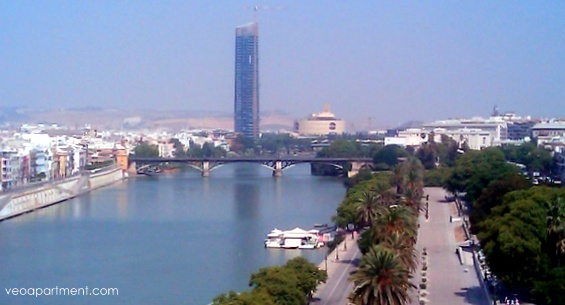
View of Triana Bridge from the Torre del Oro
Beyond the Triana bridge you can find the only grassy bank beside the river in Seville; if the weather’s right it will be full of Sevillanos taking the sun, eating, drinking and socialising. Go further and you’re on the long walkway beyond the touristy areas that’s the territory of runners, cyclists and dog-walkers. Less to see here, although some of the buildings left over from the ’92 expo are weirdly interesting, and in the summer season there’s always the screams from the people enjoying the Isla Magica theme park floating across the water. For those who are interested in such things you’ll also come eventually to the two modernist bridges, La Barqueta and the Amarillo.
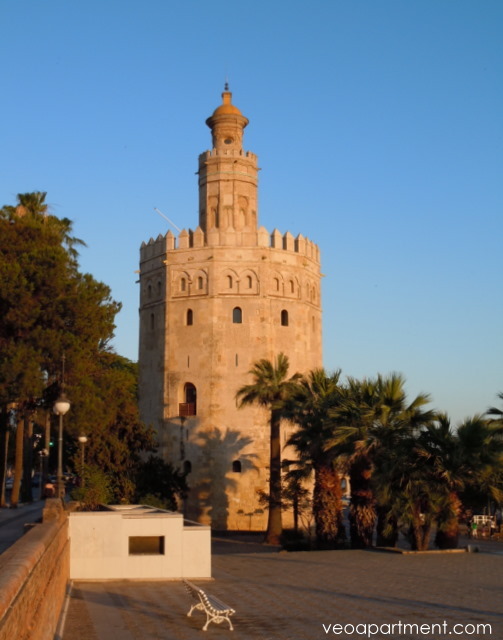
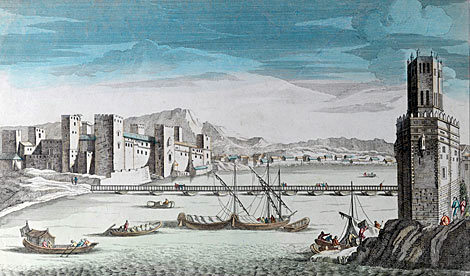 Bridge of Boats engraving courtesy of
Bridge of Boats engraving courtesy of 